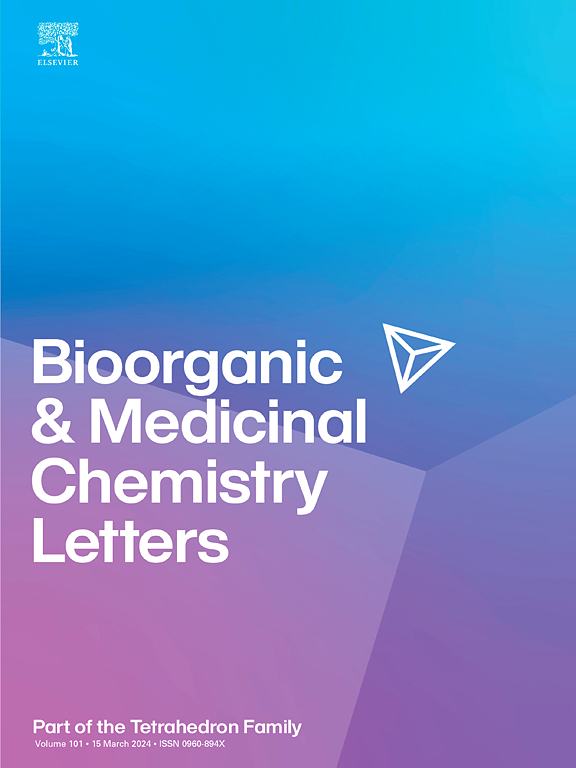自然对抗阿尔茨海默病:多肽作为多靶点药物的先导。
IF 2.2
4区 医学
Q3 CHEMISTRY, MEDICINAL
引用次数: 0
摘要
在这篇综述中,我们全面分析了天然肽,特别是来自两栖动物皮肤分泌物的肽,作为多靶点定向配体(mtdl)在阿尔茨海默病(AD)中的作用。鉴于阿尔茨海默病的多因素性质,其中胆碱能功能障碍与淀粉样蛋白-β聚集,tau过度磷酸化,氧化应激,金属离子失衡和单胺氧化酶失调交叉,迫切需要能够同时调节几种病理途径的治疗策略。我们首先回顾胆碱能假说及其分子和结构基础,强调胆碱酯酶的催化活性位点(CAS)和外周阴离子位点(PAS)等关键结合位点的相关性。这篇综述的中轴线在于探索天然存在的肽,这些肽已经证明了对ad相关靶点的双重或多重活性。我们强调了我们小组在两栖动物衍生肽方面的开创性工作,如Hp-1971, Hp-1935和BcI-1003,它们表现出对AChE和BChE的非竞争性抑制,MAO-B调节和抗氧化特性。此外,我们描述了来自各种两栖动物和其他动物或植物来源的其他富含肽的提取物和生物活性序列,扩大了具有神经保护潜力的天然分子的景观。我们还深入研究了肽修饰策略,如氨基酸取代、环化、d-氨基酸掺入和末端/侧链功能化,这些策略已被用于增强肽的稳定性、血脑屏障通透性和靶标亲和力。这些策略不仅改善了天然肽的药代动力学特征,而且为合理设计下一代肽疗法打开了大门。总的来说,这篇综述强调了天然肽作为支架的巨大潜力,可以用于开发能够干预阿尔茨海默病病理复杂级联的多功能药物。本文章由计算机程序翻译,如有差异,请以英文原文为准。

Fighting Alzheimer's naturally: Peptides as multitarget drug leads
In this review, we provide a comprehensive analysis of the role of natural peptides—particularly those derived from amphibian skin secretions—as multitarget-directed ligands (MTDLs) in the context of Alzheimer's disease (AD). Given the multifactorial nature of AD, where cholinergic dysfunction intersects with amyloid-β aggregation, tau hyperphosphorylation, oxidative stress, metal ion imbalance, and monoamine oxidase dysregulation, therapeutic strategies capable of modulating several pathological pathways simultaneously are urgently needed. We begin by revisiting the cholinergic hypothesis and its molecular and structural underpinnings, emphasizing the relevance of key binding sites such as the catalytic active site (CAS) and the peripheral anionic site (PAS) of cholinesterases. The central axis of this review lies in the exploration of naturally occurring peptides that have demonstrated dual or multiple activities against AD-related targets. We highlight our group's pioneering work on amphibian-derived peptides such as Hp-1971, Hp-1935, and BcI-1003, which exhibit non-competitive inhibition of AChE and BChE, MAO-B modulation, and antioxidant properties. Furthermore, we describe additional peptide-rich extracts and bioactive sequences from various amphibians and other animal or plant sources, expanding the landscape of natural molecules with neuroprotective potential. We also delve into peptide modification strategies—such as amino acid substitution, cyclization, D-amino acid incorporation, and terminal/side-chain functionalization—that have been employed to enhance peptide stability, blood-brain barrier permeability, and target affinity. These strategies not only improve the pharmacokinetic profiles of native peptides but also open the door for the rational design of next-generation peptide therapeutics. Overall, this review underscores the vast potential of natural peptides as scaffolds for the development of multifunctional agents capable of intervening in the complex cascade of Alzheimer's pathology.
求助全文
通过发布文献求助,成功后即可免费获取论文全文。
去求助
来源期刊
CiteScore
5.70
自引率
3.70%
发文量
463
审稿时长
27 days
期刊介绍:
Bioorganic & Medicinal Chemistry Letters presents preliminary experimental or theoretical research results of outstanding significance and timeliness on all aspects of science at the interface of chemistry and biology and on major advances in drug design and development. The journal publishes articles in the form of communications reporting experimental or theoretical results of special interest, and strives to provide maximum dissemination to a large, international audience.

 求助内容:
求助内容: 应助结果提醒方式:
应助结果提醒方式:


